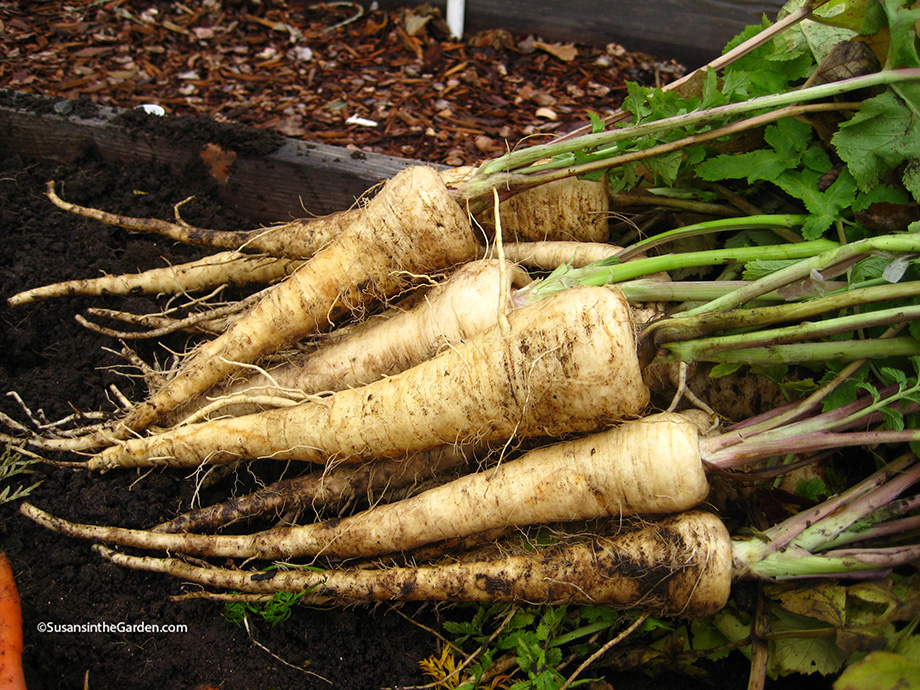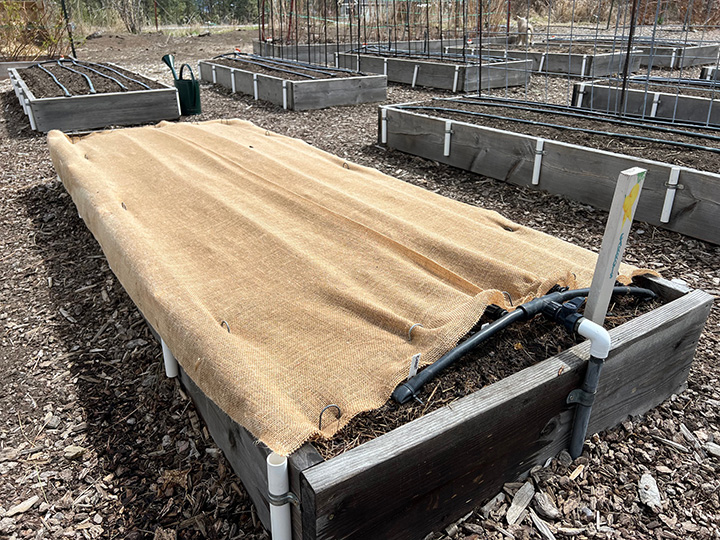Grow Parsnips

It’s been many years since I first started to grow parsnips. Frankly, I was a little suspicious of those things that aren’t very commonly grown. I soon discovered they have a wonderful flavor and add a lot to dishes. Give them a try!
Latin Name: Pastinaca sativa
Plant Family: Carrot (Apiaceae)
Cool-season crop
Did You Know?
Parsnips look like white carrots and aren’t as popular in this country as they are in the U.K. I think that’s because most folks don’t realize the roots have a sweet, nutty flavor. They are native to Europe and Asia, and were used as an inexpensive sweetener before cane sugar became widely available.
Plant Seeds or Seedlings? Direct-sow seeds in the garden.
When: In early spring when the soil is dry enough to be worked.
Days to Germination: 14 to 21 days
Depth to Sow: 1/2 inch
Spacing: 1 inch apart, but later thinned to 3-4 inches apart; space rows 12 to 18 inches apart.
Days to Maturity: 110 to 120
Cultural Information:
To grow parsnips, there are a few important steps to follow. Parsnips seeds have a very short shelf life so start with fresh seeds every year. To aid in germination, soak seeds in water water overnight. While preparing your planting bed, add some bone meal to help with root growth. Sow the seeds at the recommended depth and spacing, and water them in well.
Next, use the “board method” to prevent a crust from forming on the soil surface: cover each row with a scrap 2×4 or 1×4 piece of lumber for a week. Remove the boards and keep the soil evenly moist until the majority of the seeds have germinated. Or you can use the “burlap method” as an alternative. It works the same way but looks a little tidier! (see photo below) Watch my video to see exactly how I do this. Once the seedlings are about 3 inches tall, thin them to a spacing of 3 or 4 inches to allow for root growth. Keep the bed weeded so there won’t be competition for moisture and nutrients. Water regularly.
Susan’s Picks: ‘Albion’, ‘Gladiator’, ‘Hollow Crown’, ‘Lancer’
When to Harvest:
Pick parsnips once their roots are a decent size. However, the longer they grow, and the more they are frosted in the fall, the sweeter their roots become. To avoid breaking the roots while harvesting them, use either a shovel or spading fork to gently lift them from the soil. Be careful not to damage the roots as that will affect their storage potential.
How to Cook & Preserve:
Roasting parsnips, carrots, onions and garlic together produces a delightful autumn side dish. Parsnips also add a bit of sweetness to soups, stews and casseroles. Pureed parsnip soup is to die for, especially when paired with a bit of apple. Or mash parsnips and potatoes together for a winning combination. The best way to store the roots is in a bin filled with lightly-moistened straw. Place the bin in a cool, dark location such as a garage or root cellar.
My Videos About Growing Parsnips:
Back to Vegetable Grow Guide Chart
Copyright: Susan Mulvihill, Susan’s in the Garden, SusansintheGarden.com.


